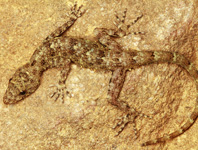Abstract
We describe the Mesoamerican leaf litter weevil genus Plumolepilius Barrios-Izás & Anderson, new genus (Coleoptera: Curculionidae: Molytinae: Conotrachelini) (type species P. trifiniensis Barrios-Izás & Anderson, new species), species of which inhabit mountain ecosystems from the state of Chiapas in southeastern Mexico to northern Panama. In this paper we describe nine new species from Mexico, Guatemala, and El Salvador: P. trifiniensis Barrios-Izás & Anderson, new species (El Salvador and Guatemala); P. branstetteri Barrios-Izás & Anderson, new species (Guatemala and Mexico); P. longinoi Barrios-Izás & Anderson, new species (Guatemala and Mexico); P. cortezi Barrios-Izás & Anderson, new species (Guatemala and Mexico); P. canoi Barrios-Izás & Anderson, new species (Guatemala); P. schusteri Barrios-Izás & Anderson, new species (Guatemala and Mexico); P. daryi Barrios-Izás & Anderson, new species (Guatemala); P. yolnabajensis Barrios-Izás & Anderson, new species (Guatemala); and P. macalajauensis Barrios-Izás & Anderson, new species (Guatemala).
The genus and the species are named and described, information on their geographical distributions is given and images of the habitus of both sexes and the aedeagus are presented. A key to the species of Plumolepilius based on males is included.
The monophyly of Plumolepilius was confirmed by a parsimony analysis of external and male aedeagus morphology and the genus is best characterized by the presence of plumose scales lining the prosternal channel. Phylogenetic analysis supports that Lepilius Champion 1905 is the sister genus of Plumolepilius.
References
Anderson, R.S. (2010) A taxonomic monograph of the Middle American leaf-litter inhabiting weevil genus Theognete Champion (Coleoptera: Curculionidae; Molytinae; Lymantini). Zootaxa, 2458, 1–127.
Anderson, R.S. (2012) The genus Lepilius Champion (Coleoptera: Curculionidae: Molytinae: Conotrachelini) in North America, with description of a new species, Lepilius chisosensis Anderson, from Big Bend National Park, Texas, U.S.A. The Coleopterists Bulletin, 66, 67–69.
http://dx.doi.org/10.1649/072.066.0122Gilbert, M.T.P., Moore, W., Melchior, L. & Worobey, M. (2007) DNA extraction from dry museum beetles without conferring external morphological damage. PLoS One, 2, e272.
http://dx.doi.org/10.1371/journal.pone.0000272Goloboff, P.A. (1993) Estimating character weights during tree search. Cladistics, 9, 83–91.
http://dx.doi.org/10.1111/j.1096-0031.1993.tb00209.xGoloboff, P.A., Farris, J.S. & Nixon, K.C. (2008) TNT, a free program for phylogenetic analysis. Cladistics, 24, 774–786.
http://dx.doi.org/10.1111/j.1096-0031.2008.00217.xHalffter, G. (1987) Biogeography of the montane entomofauna of Mexico and Central America. Annual Review of Entomology, 32, 95–114.
http://dx.doi.org/10.1146/annurev.en.32.010187.000523Luna-Cozar, J., Anderson, R.S., Jones, R.W. & León-Cortés, J. (2014) A taxonomic monograph of the genus Tylodinus Champion (Coleoptera: Curculionidae: Cryptorhynchinae: Tylodina) of Chiapas, Mexico. Zootaxa, 3788 (1), 1–63.
http://dx.doi.org/10.11646/zootaxa.3788.1.1Morrone, J.J. (2010) Fundamental biogeographic patterns across the Mexican Transition Zone: an evolutionary approach. Ecography, 33, 355–361.
http://dx.doi.org/10.1111/j.1600-0587.2010.06266.xMorrone, J.J. (2014) Biogeographical regionalisation of the Neotropical region. Zootaxa, 3782 (1), 1–110.
http://dx.doi.org/10.11646/zootaxa.3782.1.1Morrone, J.J. (2015) Halffter's Mexican transition zone (1962–2014), cenocrons and evolutionary biogeography. Journal of Zoological Systematics and Evolutionary Research, 53, 249–257.
http://dx.doi.org/10.1111/jzs.12098Myers, N., Mittermeier, R.A., Mittermeier, C.G., da Fonseca, G.A.B. & Kent, J. (2000) Biodiversity hotspots for conservation priorities. Nature, 403, 853–858.
http://dx.doi.org/10.1038/35002501Steedman, H.F. (1958) Dimethyl hydantoin formaldehyde: a new water-soluble resin for use as a mounting medium. Quarterly Journal of Microscopical Science, 99, 451–452.

